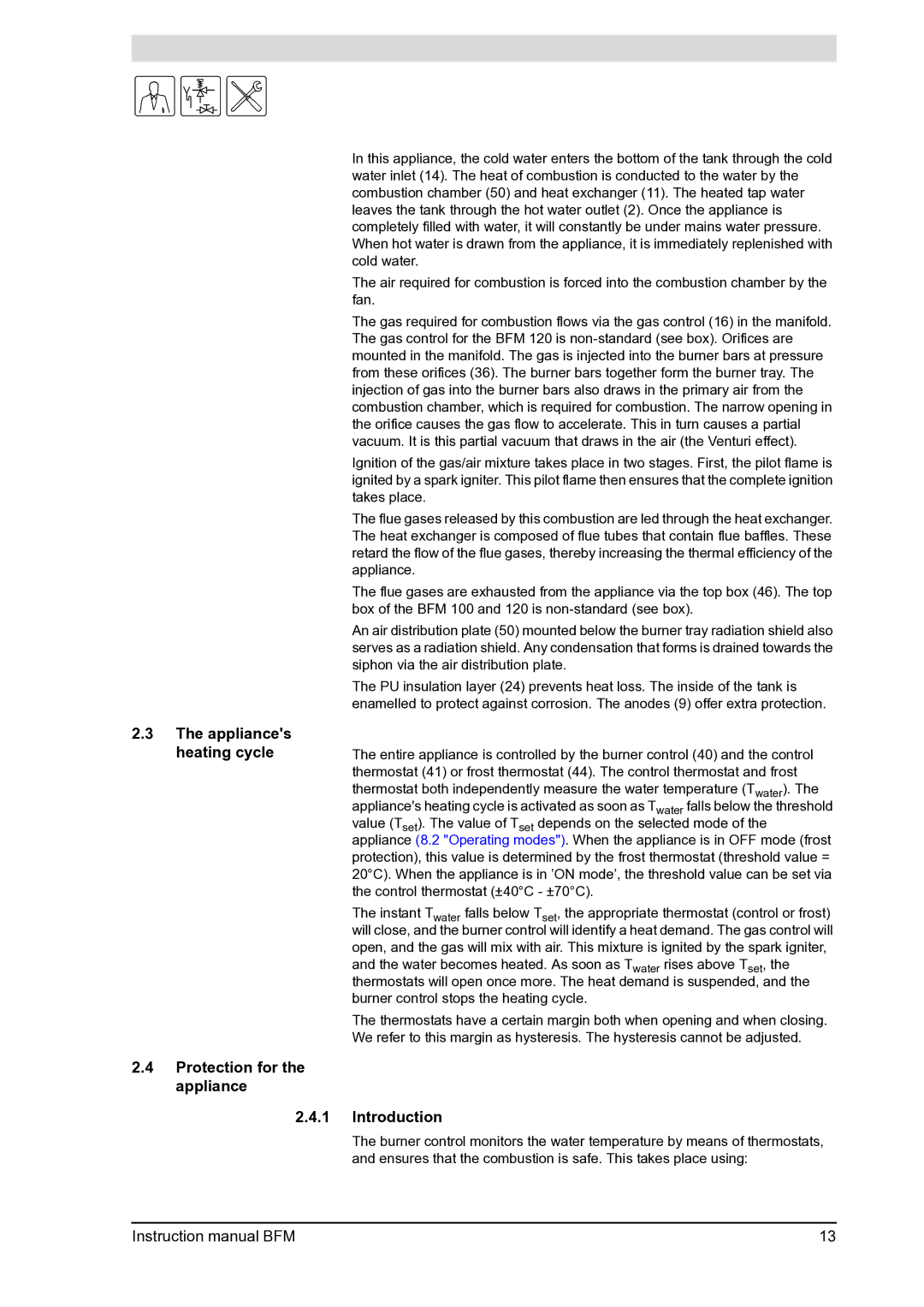
gis
In this appliance, the cold water enters the bottom of the tank through the cold water inlet (14). The heat of combustion is conducted to the water by the combustion chamber (50) and heat exchanger (11). The heated tap water leaves the tank through the hot water outlet (2). Once the appliance is completely filled with water, it will constantly be under mains water pressure. When hot water is drawn from the appliance, it is immediately replenished with cold water.
The air required for combustion is forced into the combustion chamber by the fan.
The gas required for combustion flows via the gas control (16) in the manifold. The gas control for the BFM 120 is
Ignition of the gas/air mixture takes place in two stages. First, the pilot flame is ignited by a spark igniter. This pilot flame then ensures that the complete ignition takes place.
The flue gases released by this combustion are led through the heat exchanger. The heat exchanger is composed of flue tubes that contain flue baffles. These retard the flow of the flue gases, thereby increasing the thermal efficiency of the appliance.
The flue gases are exhausted from the appliance via the top box (46). The top box of the BFM 100 and 120 is
An air distribution plate (50) mounted below the burner tray radiation shield also serves as a radiation shield. Any condensation that forms is drained towards the siphon via the air distribution plate.
The PU insulation layer (24) prevents heat loss. The inside of the tank is enamelled to protect against corrosion. The anodes (9) offer extra protection.
2.3The appliance's heating cycle
2.4Protection for the appliance
The entire appliance is controlled by the burner control (40) and the control thermostat (41) or frost thermostat (44). The control thermostat and frost thermostat both independently measure the water temperature (Twater). The appliance's heating cycle is activated as soon as Twater falls below the threshold value (Tset). The value of Tset depends on the selected mode of the appliance (8.2 "Operating modes"). When the appliance is in OFF mode (frost protection), this value is determined by the frost thermostat (threshold value = 20°C). When the appliance is in ’ON mode’, the threshold value can be set via the control thermostat (±40°C - ±70°C).
The instant Twater falls below Tset, the appropriate thermostat (control or frost) will close, and the burner control will identify a heat demand. The gas control will open, and the gas will mix with air. This mixture is ignited by the spark igniter, and the water becomes heated. As soon as Twater rises above Tset, the thermostats will open once more. The heat demand is suspended, and the burner control stops the heating cycle.
The thermostats have a certain margin both when opening and when closing. We refer to this margin as hysteresis. The hysteresis cannot be adjusted.
2.4.1Introduction
The burner control monitors the water temperature by means of thermostats, and ensures that the combustion is safe. This takes place using:
Instruction manual BFM | 13 |
